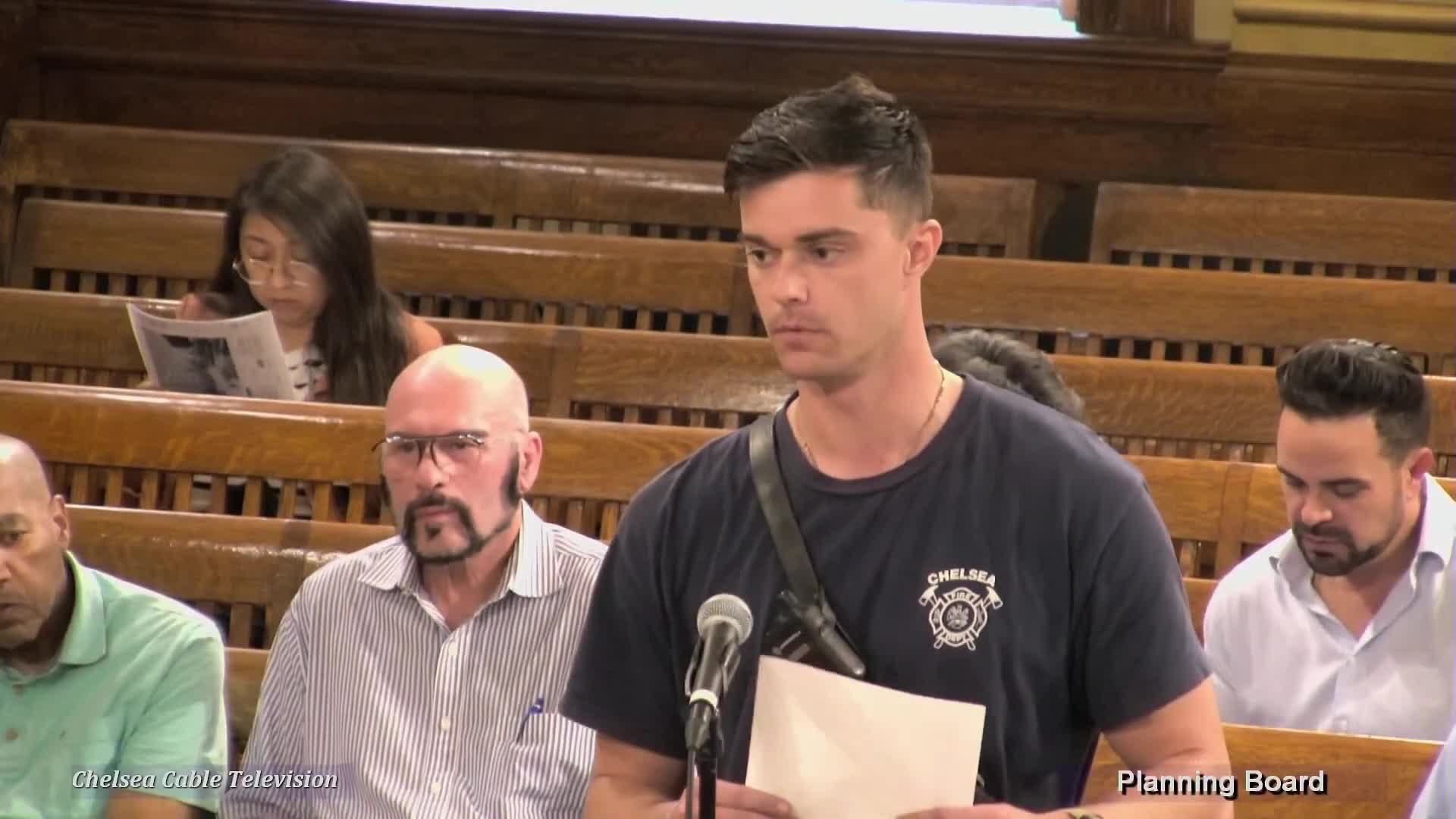Board approves 100-unit development plan at Park Street and Ellsworth Street
May 28, 2025 | Chelsea City, Suffolk County, Massachusetts
This article was created by AI summarizing key points discussed. AI makes mistakes, so for full details and context, please refer to the video of the full meeting. Please report any errors so we can fix them. Report an error »

The Chelsea City Planning Board convened on May 27, 2025, to discuss several key agenda items, including a proposed residential project and its implications for the community.
The meeting began with a discussion regarding a proposed structure that aims to minimize visibility from public ways, particularly in a historic district. Board members sought clarification on the design's alignment with neighboring structures and drainage plans. The applicant confirmed that the new structure would be less visible and that rainwater would be managed through existing gutters. Following this discussion, a motion was made and seconded to approve the proposal, which passed unanimously.
The second major item on the agenda involved a significant residential development at 105 to 115 Park Street. Anthony Rossi, representing the petitioner, outlined changes made since the last meeting, including a reduction in the number of units from 20 to 100. The new plan features a mix of unit types, with 40% designated as two- and three-bedroom apartments, responding to community feedback for more family-sized units. The inclusionary housing component was also enhanced, with a greater number of affordable units now available.
Scott Thornton, a traffic analyst, presented findings from a traffic study conducted for the project. He noted that the study accounted for the increased number of units and included assessments of local intersections. While some intersections showed significant delays, the overall traffic impact was deemed manageable. Thornton proposed modifications to local traffic patterns to improve safety and flow, including converting a narrow street to one-way traffic.
The board acknowledged the importance of the proposed traffic improvements, which are part of a larger state project expected to commence by 2030. The meeting concluded with a consensus that the development would benefit from the proposed changes and enhance the neighborhood's housing options.
Overall, the Planning Board's discussions highlighted a commitment to balancing development with community needs, particularly in terms of housing diversity and traffic management. The next steps will involve further refinement of the proposals and continued engagement with community stakeholders.
The meeting began with a discussion regarding a proposed structure that aims to minimize visibility from public ways, particularly in a historic district. Board members sought clarification on the design's alignment with neighboring structures and drainage plans. The applicant confirmed that the new structure would be less visible and that rainwater would be managed through existing gutters. Following this discussion, a motion was made and seconded to approve the proposal, which passed unanimously.
The second major item on the agenda involved a significant residential development at 105 to 115 Park Street. Anthony Rossi, representing the petitioner, outlined changes made since the last meeting, including a reduction in the number of units from 20 to 100. The new plan features a mix of unit types, with 40% designated as two- and three-bedroom apartments, responding to community feedback for more family-sized units. The inclusionary housing component was also enhanced, with a greater number of affordable units now available.
Scott Thornton, a traffic analyst, presented findings from a traffic study conducted for the project. He noted that the study accounted for the increased number of units and included assessments of local intersections. While some intersections showed significant delays, the overall traffic impact was deemed manageable. Thornton proposed modifications to local traffic patterns to improve safety and flow, including converting a narrow street to one-way traffic.
The board acknowledged the importance of the proposed traffic improvements, which are part of a larger state project expected to commence by 2030. The meeting concluded with a consensus that the development would benefit from the proposed changes and enhance the neighborhood's housing options.
Overall, the Planning Board's discussions highlighted a commitment to balancing development with community needs, particularly in terms of housing diversity and traffic management. The next steps will involve further refinement of the proposals and continued engagement with community stakeholders.
View full meeting
This article is based on a recent meeting—watch the full video and explore the complete transcript for deeper insights into the discussion.
View full meeting
